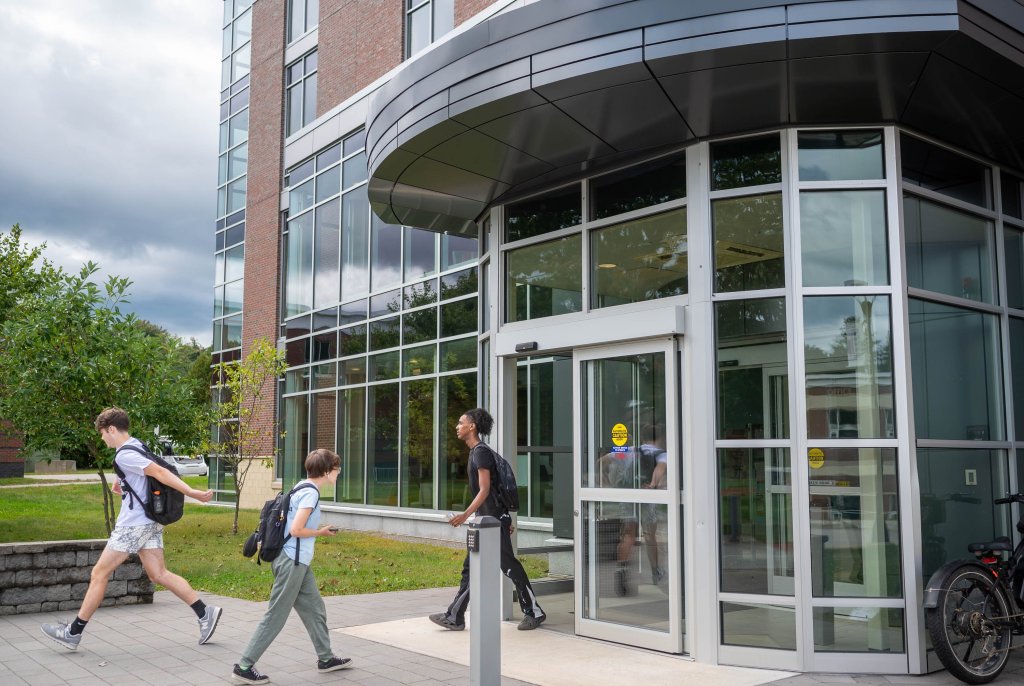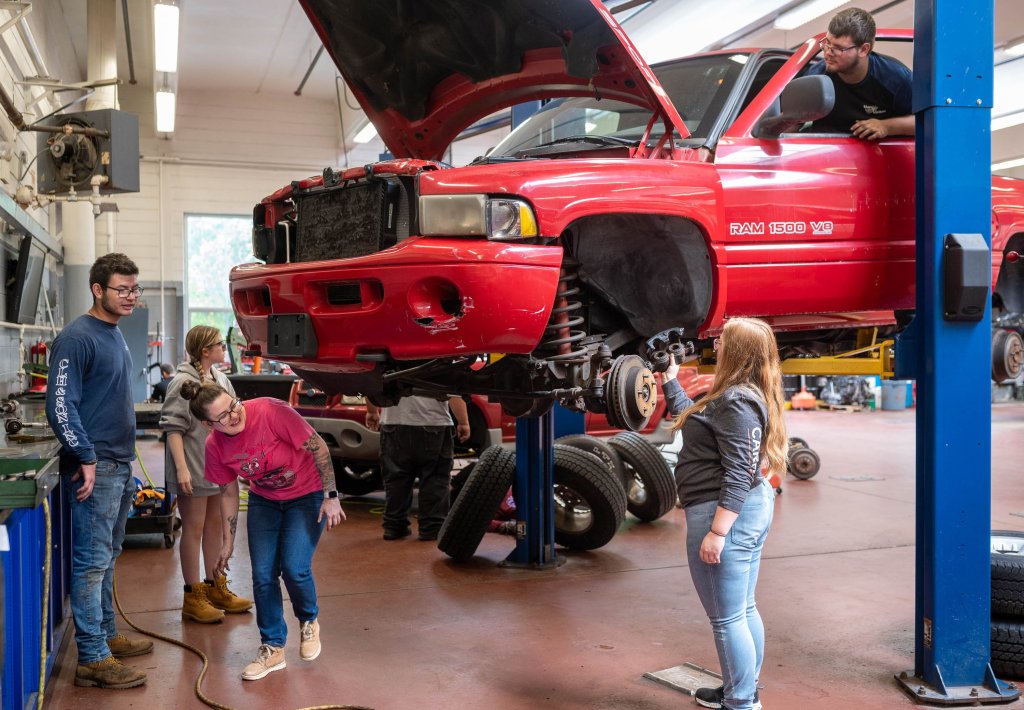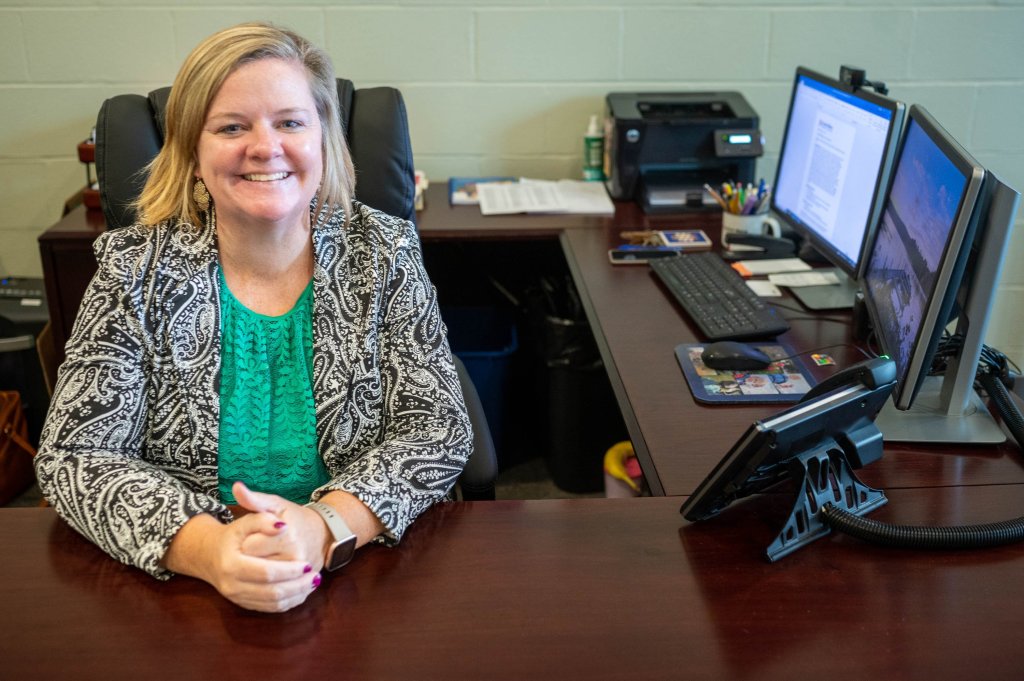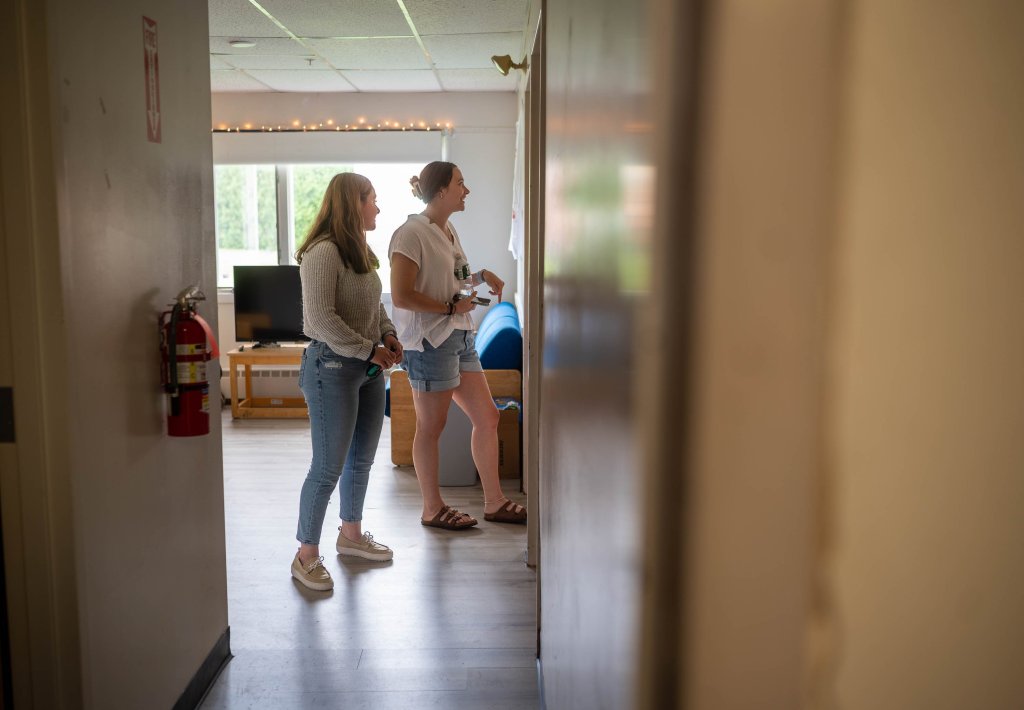AUBURN — Central Maine Community College has increased its early fall enrollment this year by 26% compared to last year, according to data on Maine’s Community Colleges website, and there seems to be a multitude of reasons for that growth.
Though the official enrollment census data for community colleges is not collected until Oct. 15, early fall enrollment figures place Central Maine Community College at the top of the chart for enrollment growth compared to all other community colleges in the state, according to the Community Colleges website.
CMCC President Betsy Libby has seen her community college trend upward over the past few years while other community colleges have trended downward. In the fall of 2019, before the pandemic, the college experienced its highest ever enrollment with 3,217 total students counted in its official enrollment, she said. Student numbers continued increasing post-pandemic, last year and this year, Libby said.
Associate Dean of Enrollment Management Andrew Morong projects that the official fall headcount that will be reported in October will exceed 4,000 total students, he said. The projection is far above the final official enrollment reported last year, which was 3,376 total students.
All community colleges in Maine saw growth in early fall enrollment this year. Washington County Community College is a close second, with an early fall enrollment increase of 25% compared to last year, according to the Maine Community College System website. Kennebec Valley Community College had a 21% increase and Eastern Maine Community College had a 20% increase.
The early fall enrollment figures do not include students in early college programs or students in short-term workforce training programs, according to the website. The final fall enrollment count will likely report an even higher total when students in those programs are considered.
After a steady decline in final fall enrollment totals from 2014 to 2018, total enrollment figures for the community college system in Maine are tracking upward, according to community college data. The system did experience decreasing enrollment again in 2020 and 2021, when COVID-19 restrictions were in place. After the majority of those restrictions were lifted, enrollment started trending upward in the fall of 2022 and many Maine community colleges started seeing record enrollments.
However, CMCC officials do not think the end of those restrictions is the only, or even the predominant, reason why students started flocking to the colleges this year and last year.
SEVERAL GROWTH FACTORS
Morong and Libby attribute CMCC’s higher enrollment to several factors, including program expansions, smarter recruiting efforts, new athletic fields, more transfer agreements with other institutions and free community college tuition for recent high school graduates.
The school has added new programs and expanded others, Libby said. It added psychology, HVAC and plumbing programs, a new business program track for students who want to transfer to a four-year college, and expanded its criminal justice program and some of its allied health programs. All have led to more enrollments.
More savvy recruitment efforts have also led to the increase, she said. School officials will stay in touch with students and build relationships with them. “We have just completely utilized the technology resources that are available to us in our student information system to just be better at what we do,” she said.
New athletic fields added to the Turner Street campus in the fall of 2019 also helped increase enrollment, she said. Along with the new fields, the college has added some sports offerings, including women’s ice hockey, which will begin next fall, Morong said.
Morong also thinks more than doubling the number of transfer agreements the community college has with four-year institutions, primarily university systems, has made the school more attractive to students. It holds more than 100 of those transfer agreements, he said.
Another big factor Libby has observed is the state’s free tuition program for certain qualifying students who choose to attend a community college.
High school graduates and those who have received their high school diploma equivalency from 2020 to 2025 are eligible to attend any community college in Maine tuition-free. It is a state scholarship that covers tuition and mandatory fees after federal and state grant aid is applied.
The program benefited 6,400 students when it was rolled out in the spring of 2022, according to the Community College System website.
Rangeley native Winnie Larochelle and Augusta native Sage Fortin found offerings at CMCC that put it ahead of other options they were considering.
When Larochelle was considering where to study criminal justice, she looked at Thomas College in Waterville and Husson University in Bangor, but CMCC’s campus stood out to her after touring it several times, as did the state’s free community college tuition program, she said.
Fortin was considering nursing programs at four-year colleges but settled on CMCC’s registered nursing program. She said she hopes to get her Bachelor of Science degree in nursing online through an employer after she graduates. Her plan allows her to get nearly all her education for free.
Both students agreed that the technology available to students in each program was a big draw. Some of them were not available at the other schools they were considering. In the nursing program, Fortin mentioned the benefit of being able to see a three-dimensional image of the human body on a “huge” iPad-style device.
As part of her criminal justice program, Larochelle said she enjoys the defense tactics room in which she can learn how to defend herself and how to take someone to the ground properly, she said. The room has three large screens displaying different situations law enforcement officers may face in the field, and students must assess each situation as if they were approaching the scene.
GROWTH MEANS DOING THINGS DIFFERENTLY
The higher enrollment is also putting pressure on CMMC’s student housing capacity, which surpassed the 250 beds available in on-campus housing among two residence halls and two suite-style dorms.
This year, the college contracted with Center Street Value Inn at 170 Center St. in Auburn to house just over 120 students, plus full-time resident advisers. The off-campus residence is nicknamed Mustang Hall, a reference to the college’s mascot.
The school is beginning the process of developing a Facilities Master Plan, in which on-campus housing will be discussed, Libby said. But officials need to make sure there is a long-term need to move forward with any new housing investments. Expecting enrollment growth to continue, the school is starting to make plans to support that growth, which include continuing to develop its Strategic Enrollment Plan.
Dining is another factor the school had to rethink with more students, she said. There are self-serve stations in the dining commons, which helps to better manage staff time. The school also had to increase its Learning Commons hours, where reference and research materials are available, along with tutoring.
The school added a public services simulation center, which is a new building on campus, to support the public services department. It includes programs in criminal justice, forensic science, conservation law enforcement, police operations advanced certificate, justice studies, psychology and social sciences, she said. The department outgrew its space because of higher student interest.
A FOCUS ON JOBS
Many of the trades and jobs seeing the biggest demand in Maine now are taught at community colleges. As a result, the schools are often developing the state’s workforce, Libby said.
For instance, the college’s short-term “workforce credential” programs, such as welding and phlebotomy, are completed within weeks or days rather than a traditional two-year program, she said. Those programs tend to serve students going directly into the local workforce.
Half the college’s programs require occupational learning experiences — field learning at a real job site — and they get credit for that time, she said. That fieldwork usually turns into permanent employment that students move into at those facilities.
It leads to many of the students staying and working within the state, she said. “So, they’re getting their hands wet and they’re really already beginning to benefit the workforce while they’re a student here.”
Fortin and Larochelle intend to settle and work in Maine after graduation.
Student loan debt tends to be a big factor for those studying law enforcement because wages in the industry are not as high as others, Larochelle said. If not for the free tuition, she would have had to figure out how to pay for schooling and how to finance attending the Maine Criminal Justice Academy, which Central Maine Community College also pays for.
“That’s just another financial burden that they’re taking away that I would have had to try to figure out to pay for if I went somewhere else, on top of that four-year schooling,” she said.
For Fortin, leaving college with little to no debt will give her one less thing to worry about as she goes into the workforce after graduation, she said.
“Prices are going up on everything,” she said. “So coming out with like not having to worry about school debt is helpful, so that you can focus on your life needs and the necessities,” she said.
Send questions/comments to the editors.











Comments are no longer available on this story